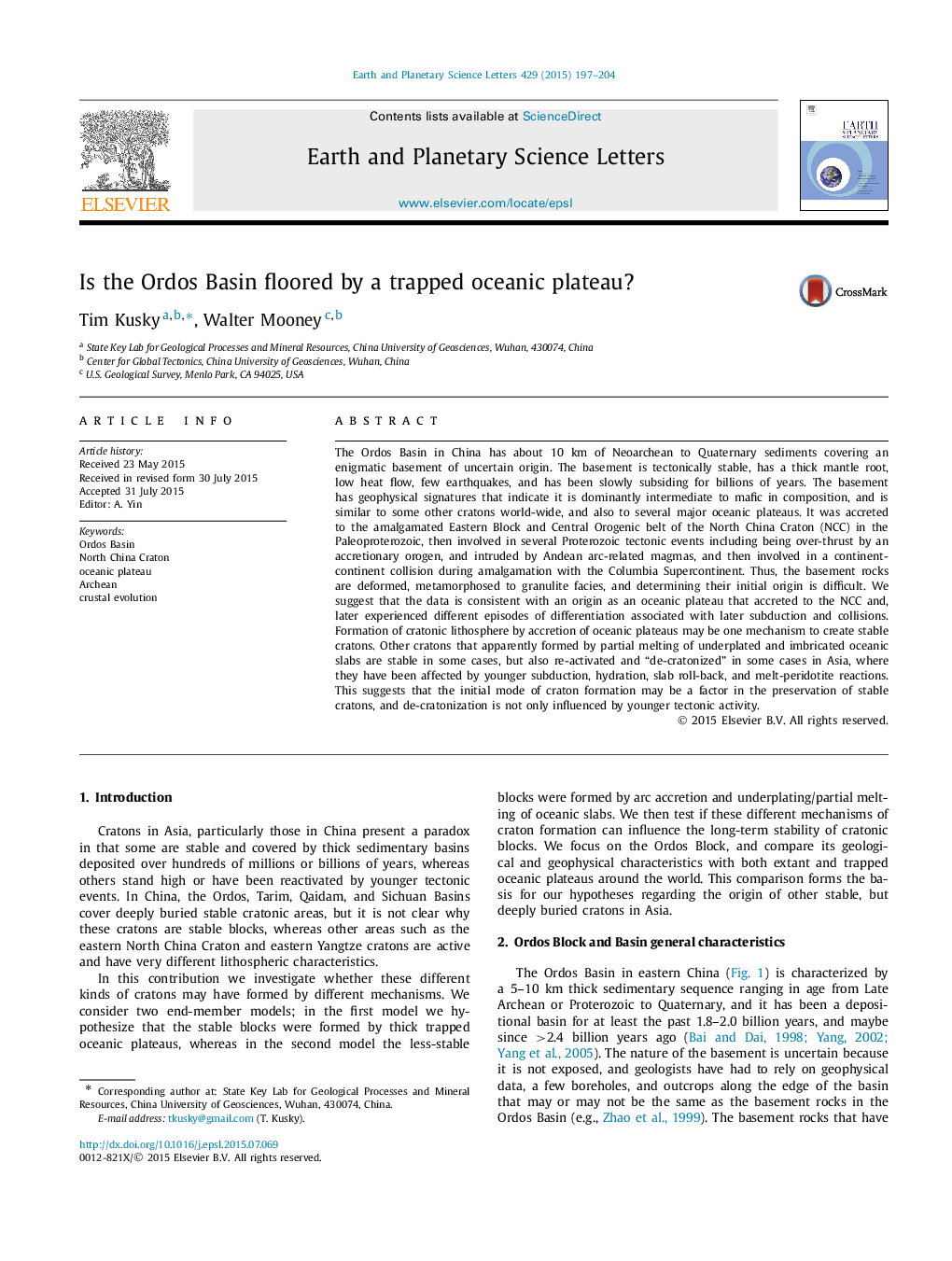| کد مقاله | کد نشریه | سال انتشار | مقاله انگلیسی | نسخه تمام متن |
|---|---|---|---|---|
| 6428202 | 1634727 | 2015 | 8 صفحه PDF | دانلود رایگان |

- The nature of the basement to the Ordos Block in the North China Craton is enigmatic.
- Data are consistent with the Ordos basement being a trapped Archean oceanic plateau.
- Some cratons may form by accretion and modification of oceanic plateaus.
- Craton stability may partially depend on the mode of formation.
- New data are needed to test the nature of the enigmatic basement to the Ordos Block.
The Ordos Basin in China has about 10 km of Neoarchean to Quaternary sediments covering an enigmatic basement of uncertain origin. The basement is tectonically stable, has a thick mantle root, low heat flow, few earthquakes, and has been slowly subsiding for billions of years. The basement has geophysical signatures that indicate it is dominantly intermediate to mafic in composition, and is similar to some other cratons world-wide, and also to several major oceanic plateaus. It was accreted to the amalgamated Eastern Block and Central Orogenic belt of the North China Craton (NCC) in the Paleoproterozoic, then involved in several Proterozoic tectonic events including being over-thrust by an accretionary orogen, and intruded by Andean arc-related magmas, and then involved in a continent-continent collision during amalgamation with the Columbia Supercontinent. Thus, the basement rocks are deformed, metamorphosed to granulite facies, and determining their initial origin is difficult. We suggest that the data is consistent with an origin as an oceanic plateau that accreted to the NCC and, later experienced different episodes of differentiation associated with later subduction and collisions. Formation of cratonic lithosphere by accretion of oceanic plateaus may be one mechanism to create stable cratons. Other cratons that apparently formed by partial melting of underplated and imbricated oceanic slabs are stable in some cases, but also re-activated and “de-cratonized” in some cases in Asia, where they have been affected by younger subduction, hydration, slab roll-back, and melt-peridotite reactions. This suggests that the initial mode of craton formation may be a factor in the preservation of stable cratons, and de-cratonization is not only influenced by younger tectonic activity.
178
Journal: Earth and Planetary Science Letters - Volume 429, 1 November 2015, Pages 197-204